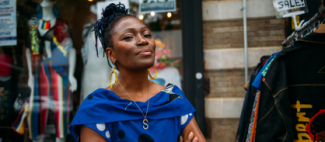In light of the Covid-19 pandemic, the playing fields for retail and restaurant business have changed and the business’s ability to navigate these changes determines their chance of success and long term growth. Read on for what to do now to prepare and what to expect in the near future.
THE CURRENT LANDSCAPE
Restaurants:
Though pick-up and 3rd Party delivery sales are increasing, it will not fully compensate for the sales gap from lack of dine-in services. The reality is that more people are cooking at home, and they may continue to do so for a while.
According to a recent AMC Global studies:
-
38% of consumers say they will more likely support local businesses in the future
-
32% of consumers plan to make more home made meals after the pandemic
-
40% say they plan to focus more on saving and budgeting after the pandemic
-
98% of consumers are snacking more during Covid-19
In order to thrive in the new normal, restaurants will have to adapt their business models. From selling “Make It Yourself” kits to utilizing their own supply chain advantages to sell some inventory as groceries, restaurants will need to bend their business model, moving from pure in-dining services to a blended model of take out services and products. The future of the industry may be uncertain but consumers are looking for businesses that stand out from the crowd; it is time to take risks and try new ideas that fit the new reality.
Retail:
Non-Essential Retail has been under severe pressure and many businesses whose supply chain has been impacted by COVID19 have limited inventory, forcing customers to try new brands. This could shift future brand preferences and lower overall consumer brand loyalty.
AMS, Rakuten Intelligence & ACI Worldwide recent studies show:
-
98% of consumers have found their normal brand of paper products unavailable, causing 21% of those shoppers to shift brands
-
Home improvement product and furnishing sales increased 97% due to the fact that people are spending more time at home and paying more attention to how to improve their home environment
-
Online DIY product retailers have seen an increase of 136% in sales compared to March of last year
Expect that one immediate outcome is that online shopping sales will continue to increase, further accelerating the digital revolution of the retail industry. Brands with better digital footprints should be the first to recover. Establishing digital advantages and being in front of innovation will best prepare businesses for the recovery process.
PREPARING FOR REOPENING
Analysts expect that the return of traffic will be slow and supply chain constraints should be expected for some time. Consumer spending power has decreased over the past few months leading to a hunt for value, with more people likely to purchase from businesses with lower price points.
As you think about reopening, be mindful that current consumer behavior may become permanent, with online shopping a significant part of the new normal. According to an AMC recent study, 25% of consumers are planning on continuing with online grocery shopping. The study has also confirmed consumer’s fear of returning to crowded places. Consumers are likely to feel safer returning to establishments that take very visible precautions and establish severe restrictions on how many people are allowed in at any given time. So make sure to include safety precautions in your reopening planning!
Actionable tips:
-
Stay in contact with your customers even if you are not operating at the moment. Take advantage of the current digital ecosystem—invest in your digital presence and expand your ecommerce if possible.
-
The competitive landscape will change; that means you will have to change too. Look to competitors for inspiration on potential business shifts and product messaging changes to attract customers. The risk of not trying anything new is higher than the risk of trying and failing.
-
Plan financially as an extended period of reduced sales may be ahead of you. Focus on a 90 days forecast instead of a typical 12 month one.
-
Take visible safety measures and share them with your customers.






